Twijfel je tussen park skis en all-mountain skis? Hier is het korte antwoord:
- Park skis zijn geweldig voor tricks, sprongen en terrain parks. Ze zijn korter, lichter en hebben twin tips voor achteruit skiën en landen van tricks. Het beste voor freestyle skiërs en parkfans.
- All-mountain skis zijn je alleskunner. Ze kunnen geprepareerde pistes, lichte poedersneeuw en gemengde omstandigheden aan. Ze zijn zwaarder, langer en stabieler bij hoge snelheden - perfect voor gevorderde skiërs die veelzijdigheid willen.
Korte overzicht:
- Park Skis: Ideaal voor terrain parks, tricks en freestyle skiën. Geweldig voor spins, flips en rails.
- All-Mountain Skis: Ontworpen voor allround gebruik op gevarieerd terrein, van geprepareerde pistes tot lichte poedersneeuw.
Als je op zoek bent naar iets draagbaars en gemakkelijk te gebruiken, bekijk dan Snowfeet mini skis - een compacte en leuke alternatief voor casual skiën en sneeuwavonturen. Laten we het verder uitpluizen!
CARVING SKIS VS ALL-MOUNTAIN SKIS VS PARK SKIS | ULTIEME STRIJD
Wat zijn Park Skis?
Park skis zijn speciaal ontworpen voor freestyle skiën en avonturen in het terrain park. Ze zijn gebouwd om de unieke uitdagingen van sprongen, rails, boxes en halfpipes aan te kunnen - plekken waar gewone ski's tekort kunnen schieten. Deze ski's zijn snel, wendbaar en responsief, waardoor ze perfect zijn voor parkprestaties.
Wat park skis onderscheidt, is hun vermogen om zowel vooruit als achteruit even goed te presteren. Dit opent eindeloze mogelijkheden voor tricks en manoeuvres die niet mogelijk zouden zijn op ski's die alleen voor voorwaartse beweging zijn ontworpen. Laten we eens bekijken wat deze ski's zo bijzonder maakt en waarom hun eigenschappen zo belangrijk zijn in het park.
Ontwerp en Kenmerken
Een opvallend kenmerk van park ski's is het twin-tip ontwerp, waarbij zowel de voorkant als achterkant van de ski omhoog buigen. Dit ontwerp is essentieel voor achterwaarts skiën (of “switch”) en voor het landen van trucs. De meeste park ski's hebben een taillebreedte tussen 80–90 mm, hoewel sommige modellen voor all-mountain gebruik tot 105 mm kunnen gaan. Deze slankere vorm (vergeleken met poederski's) geeft je betere kantencontrole en snelle reacties bij het navigeren door de strakke features van een terrain park.
Flexibiliteit is een andere grote factor voor park ski's. Zoals pro-skiër Tim McChesney uitlegt:
"Flex is een van de belangrijkste onderdelen van een park ski. Ik ski met twee verschillende flex ski's afhankelijk van wat ik doe: Voor springen geef ik de voorkeur aan een stijvere ski die steviger aanvoelt bij landingen en hoge snelheden (Candide 1.0). Voor rails en gewoon plezier maken op kleinere features ski ik een iets bredere, zachtere ski (Candide 2.0)."
Een andere belangrijke eigenschap? Centrally mounted bindings. Deze opstelling helpt je gewicht te balanceren voor soepelere spins en sprongen, wat leidt tot snellere rotaties en stabielere landingen.
Veel park ski's combineren ook een camber profiel onder de voet met een beetje rocker in de tips en tails. McChesney legt uit waarom deze combinatie zo goed werkt:
"Mijn favoriete park ski profiel is camber onder de voet met een beetje rocker in de tip en tail. De camber onder de voet is zo belangrijk zodat de ski scherp aanvoelt en een goede pop heeft. Het beetje rocker in de tip en tail helpt bij het afzetten op natte sprongen en maakt de ski iets leuker zonder dat hij aan beide uiteinden te zacht aanvoelt."
Beste Gebruikssituaties
Park ski's komen het beste tot hun recht in terrain parks, waar je sprongen, rails, boxes en halfpipes vindt. Hun kortere lengte en twin-tip ontwerp maken ze perfect voor spins, flips en luchttrucs. Voor jibbing (glijden op rails en boxes) zorgt de symmetrische vorm en flexibele bouw ervoor dat je features vanuit elke hoek kunt benaderen terwijl je in controle blijft. Bovendien zijn ze robuust gebouwd om de schrammen en klappen van rail riding te weerstaan.
Ze zijn ook veelzijdig genoeg voor sprongen op geprepareerde pistes. Hoewel ze niet gemaakt zijn voor diepe poeder of high-speed carven, kunnen park ski's gemakkelijk een freestyle vibe toevoegen aan je gewone skiën. En als je van urban skiën houdt, maken hun compacte formaat en duurzame constructie ze perfect voor stadsomgevingen.
Voor Wie Zijn Ze Geschikt?
Park ski's zijn een solide keuze voor skiërs van alle niveaus, of je nu net begint in het terrain park of een expert bent die geavanceerde trucs uitvoert. Als je je richt op rails en boxes, zoek dan ski's met een bredere taille (ongeveer 85–105 mm) voor betere stabiliteit en vergevingsgezindheid terwijl je jibbing-technieken leert. Aan de andere kant, als snelheid en grote sprongen jouw ding zijn, ga dan voor een smallere taille (80–95 mm) en een stijvere ski voor meer controle bij landingen op hoge snelheid.
Freestyle skiërs zullen vooral het twin-tip ontwerp en het gebalanceerde gevoel waarderen, waardoor switch skiën en luchttrucs veel makkelijker onder de knie te krijgen zijn.
Wat Zijn All-Mountain Skis?
All-mountain skis zijn als het Zwitserse zakmes van de skiwereld. Ze zijn gebouwd om een beetje van alles aan te kunnen - of je nu over ijzige pistes scheurt of een beetje lichte poedersneeuw induikt. Als je het type skiër bent dat met één paar ski's de hele berg wil bedwingen, dan zijn deze iets voor jou.
Ontwerp en Kenmerken
Wat het ontwerp betreft, raken all-mountain skis precies de juiste snaar. Ze hebben meestal een taillebreedte tussen 85 en 98 mm, wat ze veelzijdig maakt voor verschillende sneeuwcondities. Hun klassieke zandloper-vorm helpt je om vloeiende bochten te maken, of je nu op harde of zachtere sneeuw bent.
Deze ski's hebben vaak een mix van rocker en camber in hun profiel. De rocker in de tip maakt het draaien makkelijker en helpt bij het drijven in poedersneeuw, terwijl de camber onder de voet zorgt voor stevige kantencontrole en krachtsoverdracht tijdens het carven.
Qua flex vinden ze een balans - zacht genoeg om fouten te vergeven (geweldig voor halfgevorderden) maar stevig genoeg om de prestaties te leveren waar gevorderde skiërs naar verlangen. Bovendien kunnen ze dankzij versterkte kanten en duurzame kern goed tegen ijzige of wisselende terreinen zonder problemen.
Beste Gebruikssituaties
All-mountain skis blinken uit in gemengde omstandigheden. Ze zijn betrouwbaar op geprepareerde pistes, bieden goede kantencontrole en stabiel carven, ook al zijn ze niet zo razendsnel van kant naar kant als speciale carving ski's. Ze zijn ook een goede keuze voor lichte poedersneeuwdagen en kunnen buckels aan dankzij hun gebalanceerde flex en ontwerp.
Zie ze als je go-to voor resortskiën. Of je nu op de geprepareerde pistes blijft, tussen de bomen door slalomt of een buckelpiste aanpakt, deze ski's passen zich aan wat de dag ook brengt. Perfect voor die dagen waarop de omstandigheden overal anders zijn.
Voor Wie Zijn Ze Geschikt?
All-mountain skis zijn het beste voor gevorderde en halfgevorderde skiërs. Als je een halfgevorderde bent, zoek dan naar modellen met een matige stijfheid - ze geven je de stabiliteit die je nodig hebt bij hogere snelheden en zijn toch vergevingsgezind genoeg om je te helpen verbeteren. Gevorderde skiërs kiezen misschien voor stijvere ontwerpen om maximale kracht te krijgen en het beste uit hun afdalingen te halen.
Ze zijn ook een uitstekende keuze voor vakantieskiërs. Skigebieden bieden vaak een mix van sneeuwcondities, en deze ski's kunnen alles aan. Hoewel ze een fantastische allround optie zijn, zijn Snowfeet* producten het overwegen waard als draagbaarheid en veelzijdigheid bovenaan je lijst staan.
Park Skis vs All-Mountain Skis: Belangrijkste Verschillen
Kiezen tussen park skis en all-mountain skis kan voelen als een grote beslissing, vooral omdat elk is ontworpen met een specifiek doel voor ogen. Laten we de verschillen op een rijtje zetten zodat je de juiste keuze kunt maken en spijt van je aankoop kunt voorkomen.
Ontwerpverschillen
Het eerste wat je opvalt is hoe deze ski's zijn gebouwd. Park skis zijn lichter en korter, waardoor ze super gemakkelijk te manoeuvreren zijn in krappe bochten of in de lucht. Ze hebben ook een twin-tip ontwerp, wat betekent dat beide uiteinden omhoog buigen, perfect om achteruit te skiën (switch) en tricks soepel te landen.
Aan de andere kant hebben all-mountain skis meestal een directioneel ontwerp, waarbij alleen de voorkant omhoog buigt. Ze zijn zwaarder en langer, wat je meer stabiliteit geeft als je met hoge snelheid de berg afraast. Hun bredere taille helpt ook in diepere sneeuw, terwijl park skis meestal een smaller profiel hebben.
Flex is een ander groot verschil. Park skis zijn zachter, wat geweldig is voor tricks maar niet ideaal voor stabiliteit bij hoge snelheid op harde ondergrond. All-mountain skis vinden een balans en bieden genoeg flex om ijzige pistes en zachtere sneeuw gemakkelijk aan te kunnen. Bovendien hebben all-mountain skis vaak een rocker aan de voorkant, wat bochten soepeler maakt en de prestaties op ijs en lichte poedersneeuw verbetert. Park skis daarentegen kunnen een rocker aan zowel de tip als de tail hebben, wat helpt bij buttering en switch landingen.
Prestatievergelijking
Als het op prestaties aankomt, schitteren park skis in terrain parks. Hun lichte, symmetrische ontwerp maakt spins, rail slides en sprongen moeiteloos. Hoewel ze buiten het park gebruikt kunnen worden, liggen hun sterke punten duidelijk in freestyle.
All-mountain skis zijn echter de alleskunner. Ze zijn gebouwd om geprepareerde pistes, ijzige stukken en zelfs wat off-piste avonturen aan te kunnen. Park skis kunnen onstabiel aanvoelen op harde sneeuw bij hoge snelheden, maar all-mountain skis blijven stabiel, of je nu bochten snijdt of onvoorspelbaar terrein navigeert.
In poedersneeuw nemen all-mountain skis de leiding dankzij hun bredere ontwerp. Park skis kunnen lichte poedersneeuw aan, maar hebben moeite in diepere sneeuw. Voor buckels of het zigzaggen tussen bomen maken de stabiliteit en de gebalanceerde flex van all-mountain skis ze een betere keuze.
Vergelijking van voor- en nadelen
| Kenmerk | Park Skis | All-Mountain Skis |
|---|---|---|
| Beste voor | Terrain parks, sprongen, rails, tricks | Geprepareerde pistes, lichte poedersneeuw, gemengde omstandigheden |
| Veelzijdigheid | Beperkt gebruik buiten de piste | Presteert goed op de meeste terreinen |
| Leercurve | Niet ideaal voor beginners | Geschikt voor alle vaardigheidsniveaus |
| Snelheid & Stabiliteit | Minder stabiel bij hoge snelheden | Uitstekende kanten grip en stabiliteit |
| Wendbaarheid | Geweldig voor tricks en switch skiën | Perfect voor carving en algehele controle |
| Duurzaamheid | Kan rail-impacten aan maar kan sneller slijten | Gebouwd om lang mee te gaan op gevarieerd terrein |
| Prestatiebeperkingen | Niet geschikt voor gevorderde all-mountain behoeften | Niet zo snel als race ski's |
Kortom, park ski's zijn perfect voor freestyle liefhebbers die van het terrain park houden, terwijl all-mountain ski's de voorkeur hebben voor wie verschillende omstandigheden wil verkennen. Als je op zoek bent naar iets dat draagbaarheid, veelzijdigheid en plezier combineert, passen Snowfeet* producten misschien precies bij jou!
sbb-itb-17ade95
Waarom Snowfeet* Producten Beter Zijn Dan Traditionele Ski's
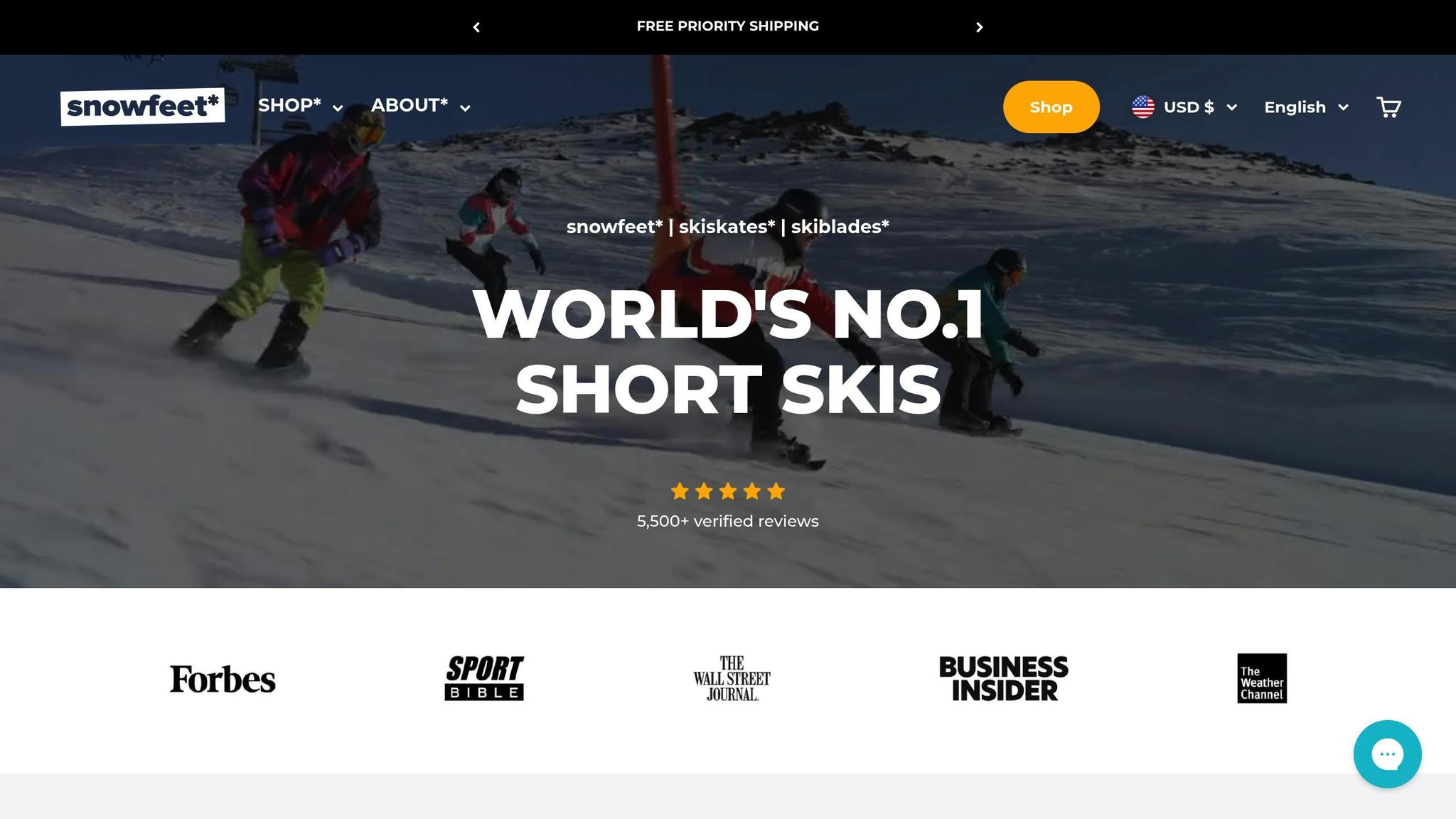
Park ski's en all-mountain ski's hebben elk hun voordelen, maar Snowfeet* producten nemen een geheel nieuwe benadering die veel van de uitdagingen van traditionele ski-uitrusting oplost. Hun slimme ontwerp combineert prestaties met gemak en biedt iets nieuws voor wintersportliefhebbers.
Compact, lichtgewicht en gemakkelijk mee te nemen
Een van de opvallende voordelen van Snowfeet* producten is hoe draagbaar ze zijn. Laten we eerlijk zijn - traditionele ski's zijn lomp. Park ski's meten meestal 150–170 cm (59–67 inch), en all-mountain ski's kunnen meer dan 180 cm (71 inch) zijn. Vergelijk dat met Snowfeet* Mini Ski Skates, die slechts 38 cm (15 inch) lang zijn. Ze zijn niet alleen korter maar ook veel lichter.
Wat betekent dat voor jou? Geen gesjouw meer met oversized skitassen of gedoe met extra bagagekosten. Deze compacte Skiskates passen gewoon in een gewone rugzak. Of je nu een weekendtrip naar Aspen plant of gewoon naar een nabijgelegen heuvel gaat, Snowfeet* producten maken reizen met je uitrusting een fluitje van een cent. En als je ze niet gebruikt, kunnen ze gemakkelijk in een kast worden opgeborgen - perfect voor stadsbewoners met beperkte ruimte.
Veelzijdigheid over verschillende terreinen
Draagbaarheid is geweldig, maar Snowfeet* producten stoppen daar niet - ze zijn gebouwd om verschillende terreinen aan te kunnen. Traditionele park ski's gedijen in terrain parks, en all-mountain ski's zijn ontworpen voor pistes, maar kunnen moeite hebben onder bepaalde omstandigheden. Snowfeet* uitrusting daarentegen is klaar voor bijna alles. Van skipistes en snowparks tot wandelpaden en zelfs sleeheuvels, deze mini ski's passen zich aan waar je ook naartoe wilt.
Skiskates zijn bijvoorbeeld perfect voor skipistes en bieden een snelle en compacte optie, terwijl Skiboards een gebalanceerd gevoel geven dat ideaal is voor carven, snowparks bezoeken of zelfs door poedersneeuw glijden. Hun kleine formaat maakt het ook mogelijk om smalle wandelpaden te navigeren die traditionele ski's niet aankunnen. Bovendien werken ze met elke winterse schoen, in tegenstelling tot Skiskates, die ski- of snowboardlaarzen vereisen.
Makkelijker te leren, leuker in gebruik
Als je ooit traditioneel skiën hebt geprobeerd, weet je dat het even kan duren om het onder de knie te krijgen. Lange, zware ski's kunnen lastig te beheersen zijn, vooral voor beginners. Snowfeet* producten maken het leerproces veel soepeler. Hun kortere lengte en lichtere gewicht zorgen voor betere controle, waardoor je sneller je balans vindt en meteen van de sneeuw kunt genieten.
Zelfs ervaren skiërs en snowboarders zijn enthousiast over de unieke ervaring die deze compacte alternatieven bieden. Ze zijn ongelooflijk wendbaar en brengen de speelse kant van wintersport terug - zonder al die zware uitrusting. En omdat je ze kunt gebruiken op wandelpaden, in lokale parken of zelfs in je eigen achtertuin, veranderen ze bijna elk besneeuwd gebied in je persoonlijke speeltuin.
Ze zijn een fantastische optie voor gezinnen die samen zorgeloos van de winterpret willen genieten.
Hoe kies je de juiste optie
Het kiezen van de juiste uitrusting komt neer op het kennen van je terreinvoorkeuren, vaardigheidsniveau en de eigenschappen die je zoekt. Of je nu traditionele parkski's, all-mountain ski's of de innovatieve Snowfeet* producten overweegt, het afstemmen van je keuze op deze factoren maakt een groot verschil in hoeveel plezier je buiten zult hebben.
Stem je voorkeuren voor terrein af
Denk na over waar je het grootste deel van je tijd zult doorbrengen. Voor geprepareerde pistes en gladde afdalingen zijn all-mountain ski's een solide keuze, die geweldige precisie en kantencontrole bieden. Als je van freestyle of parktrucs houdt, zijn twin-tip parkski's ontworpen om die bewegingen aan te kunnen. Maar hier onderscheiden Snowfeet* zich - ze zijn veelzijdig genoeg voor bijna elk terrein. Van pistes tot wandelpaden, ze zijn niet afhankelijk van specifieke ontwerpbeperkingen, waardoor ze een flexibele optie zijn voor gemengde avonturen. Zodra je je terrein hebt bepaald, is het tijd om aan je vaardigheidsniveau te denken.
Denk aan je vaardigheidsniveau
Jouw ervaring op de sneeuw bepaalt wat het beste voor je werkt. Beginners vinden lange, zware ski's vaak moeilijk te beheersen, wat het leren frustrerend kan maken. All-mountain ski's zijn over het algemeen vergevingsgezinder voor gevorderde beginners en bieden de stabiliteit die nodig is om je vertrouwen te laten groeien. Parkski's daarentegen vragen meer technische vaardigheid en precisie. Hier is het goede nieuws voor Snowfeet* fans: ze zijn beginner-vriendelijk. Hun kortere lengte en lichte ontwerp maken ze makkelijker te hanteren, waardoor je vanaf het begin betere controle hebt. Voor gevorderde skiërs bieden Snowfeet* een speelse, zeer wendbare rit die technische vaardigheden aanvult.
Weeg draagbaarheid en multifunctionele voordelen af
Praktisch gezien telt het ook mee. Traditionele ski's kunnen omvangrijk zijn - ze vereisen opslagruimte, dakdragers en gaan vaak gepaard met extra kosten voor transport. Snowfeet* producten, slechts 15 inch lang, passen in je rugzak en zijn klaar voor gebruik waar je ook bent. Ze werken op verschillende terreinen, dus je hoeft niet te investeren in aparte uitrusting voor verschillende activiteiten. Deze draagbaarheid is een game-changer voor snelle uitstapjes, besneeuwde wandelingen of zelfs casual parksessies. Bovendien, als je op je portemonnee let, besparen Snowfeet* je geld doordat je geen schoenen, bindingen, stokken of professionele installatieservices nodig hebt.
Conclusie: Maak de juiste keuze
Kiezen tussen parkski's, all-mountain ski's en Snowfeet* producten hoeft geen ontmoedigende taak te zijn. Elke optie is afgestemd op verschillende voorkeuren, maar de verschuiving naar uitrusting die veelzijdiger en gemakkelijker te gebruiken is, is moeilijk te negeren.
Parkski's zijn favoriet bij freestyle-liefhebbers, dankzij hun twin-tip ontwerp. All-mountain ski's daarentegen leveren betrouwbare prestaties op geprepareerde pistes en gemengd terrein. Beide brengen echter hun eigen logistieke uitdagingen en beperkingen in aanpasbaarheid met zich mee.
Hier komen Snowfeet* producten in beeld en veranderen het spel. Of je nu kiest voor de compacte 15-inch Mini Ski Skates (vanaf $150), de professionele Skiskates ($390), of de allround Skiblades (vanaf $450), je investeert in uitrusting die de definitie van wintersport herdefinieert. Korter betekent niet minder - het betekent meer controle, meer vrijheid en meer plezier.
In tegenstelling tot traditionele ski's die omvangrijke uitrusting en opslag vereisen, zijn Snowfeet* producten lichtgewicht en draagbaar genoeg om in je rugzak te passen. Ze zijn ontworpen om te presteren op skipistes, wandelpaden, sleeheuvels of zelfs in je besneeuwde achtertuin na een storm.
En laten we het hebben over gebruiksgemak. Snowfeet* producten hebben een mildere leercurve, waardoor ze minder intimiderend zijn voor beginners. Voor ervaren skiërs openen ze een heel nieuw niveau van wendbaarheid en speelsheid die traditionele ski's gewoon niet kunnen evenaren.
Uiteindelijk komt je keuze neer op wat voor jou het belangrijkst is. Als je je hebt vastgelegd op specifiek terrein en het niet erg vindt om de inspanning te leveren die traditionele ski-uitrusting met zich meebrengt, zijn park- of all-mountain ski's misschien je beste keuze. Maar als gemak, veelzijdigheid en puur plezier bovenaan je lijst staan, bieden Snowfeet* producten een spannende, draagbare optie die onze kijk op wintersporten verandert.
Soms komen de beste dingen echt in kleine verpakkingen.
Veelgestelde vragen
Wat is de beste keuze voor een gevorderde skiër: park skis of all-mountain skis?
Als je een gevorderde skiër bent die een stap hoger wil zetten, zijn all-mountain skis meestal je beste keuze. Waarom? Ze zijn gebouwd om een mix van terreinen en omstandigheden aan te kunnen, waardoor je de flexibiliteit hebt om je vaardigheden overal te oefenen en te verfijnen. In tegenstelling tot park skis, die zijn afgestemd op tricks en sprongen, houden all-mountain skis je opties open en helpen ze je in alle aspecten van het skiën te groeien.
Op zoek naar iets anders? Bekijk Snowfeet-producten zoals skiblades en Skiskates. Deze compacte, lichtgewicht alternatieven zijn super makkelijk mee te nemen en nog makkelijker te gebruiken. Ze zijn een geweldige manier om je vaardigheden op verschillende terreinen te verbeteren terwijl je het spannend houdt. Bovendien maakt hun unieke ontwerp ze een leuke aanvulling op je uitrusting, als aanvulling op traditionele ski's of snowboards en helpen ze je vooruit te komen zonder het gebruikelijke gedoe.
Zijn Snowfeet-producten een goede keuze voor het skiën op geprepareerde pistes en het uitproberen van terreinparken?
Snowfeet-uitrusting is een spannende optie voor skiërs die graag op geprepareerde pistes blijven maar ook wat terreinpark-actie willen proberen. Dankzij hun kleine, lichtgewicht ontwerp zijn ze ideaal voor het uitvoeren van tricks, sprongen en spins, en bieden ze de wendbaarheid en controle die gewone ski's gewoon niet kunnen leveren.
Bovendien zijn Snowfeet ongelooflijk aanpasbaar. Ze glijden moeiteloos over geprepareerde pistes, zijn super makkelijk mee te nemen en eenvoudig te gebruiken. Of je nu net begint of casual skiet, ze zijn een leuk, draagbaar alternatief voor traditionele ski's - perfect voor dagelijkse afdalingen of een sporadische parksessie.
Waarom zijn Snowfeet-producten een betere keuze dan traditionele ski's voor recreatieve skiërs die waarde hechten aan draagbaarheid en veelzijdigheid?
Snowfeet-producten bieden een verfrissend alternatief voor traditionele ski's, vooral voor wie iets draagbaars en gebruiksvriendelijks wil. In tegenstelling tot gewone ski's die zwaar en onhandig kunnen zijn, zijn Snowfeet lichtgewicht, compact en klein genoeg om in je rugzak te gooien. Ja, je kunt ze letterlijk overal mee naartoe nemen zonder te worstelen met oversized uitrusting. Best handig, toch?
Wat ze nog cooler maakt, is hun slimme ontwerp. Ze zijn super eenvoudig op te zetten en werken op allerlei soorten besneeuwde terreinen - of je nu over geprepareerde pistes cruiset of over vlakke langlaufloipes glijdt. Bovendien heb je geen speciale bindingen of veel opbergruimte nodig. Snowfeet maken het sneeuwplezier simpel en leuk, zonder het gedoe van traditionele ski-uitrusting. Als je op zoek bent naar een probleemloze, draagbare manier om van de sneeuw te genieten, zijn dit misschien wel jouw nieuwe favorieten.














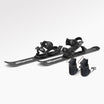






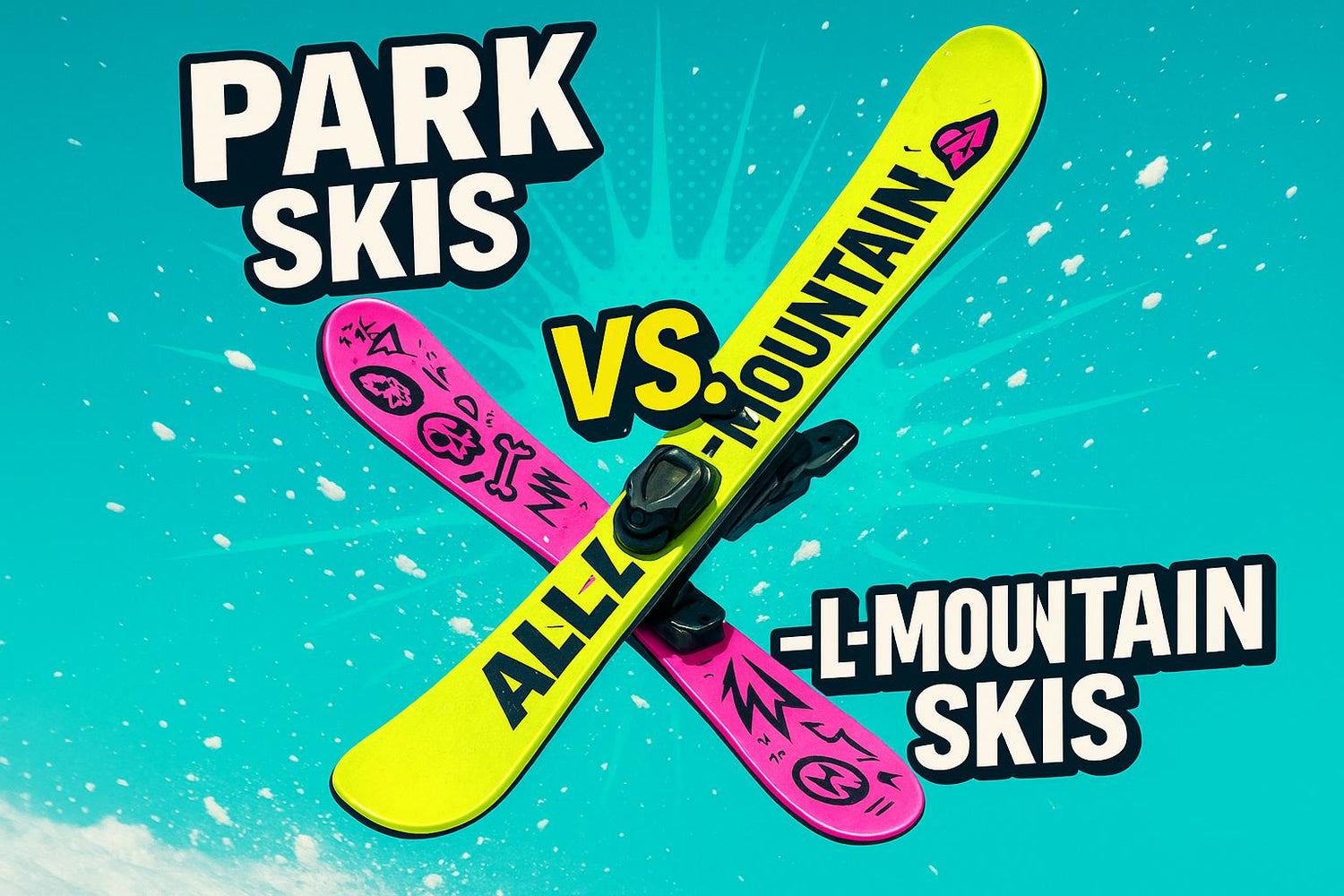
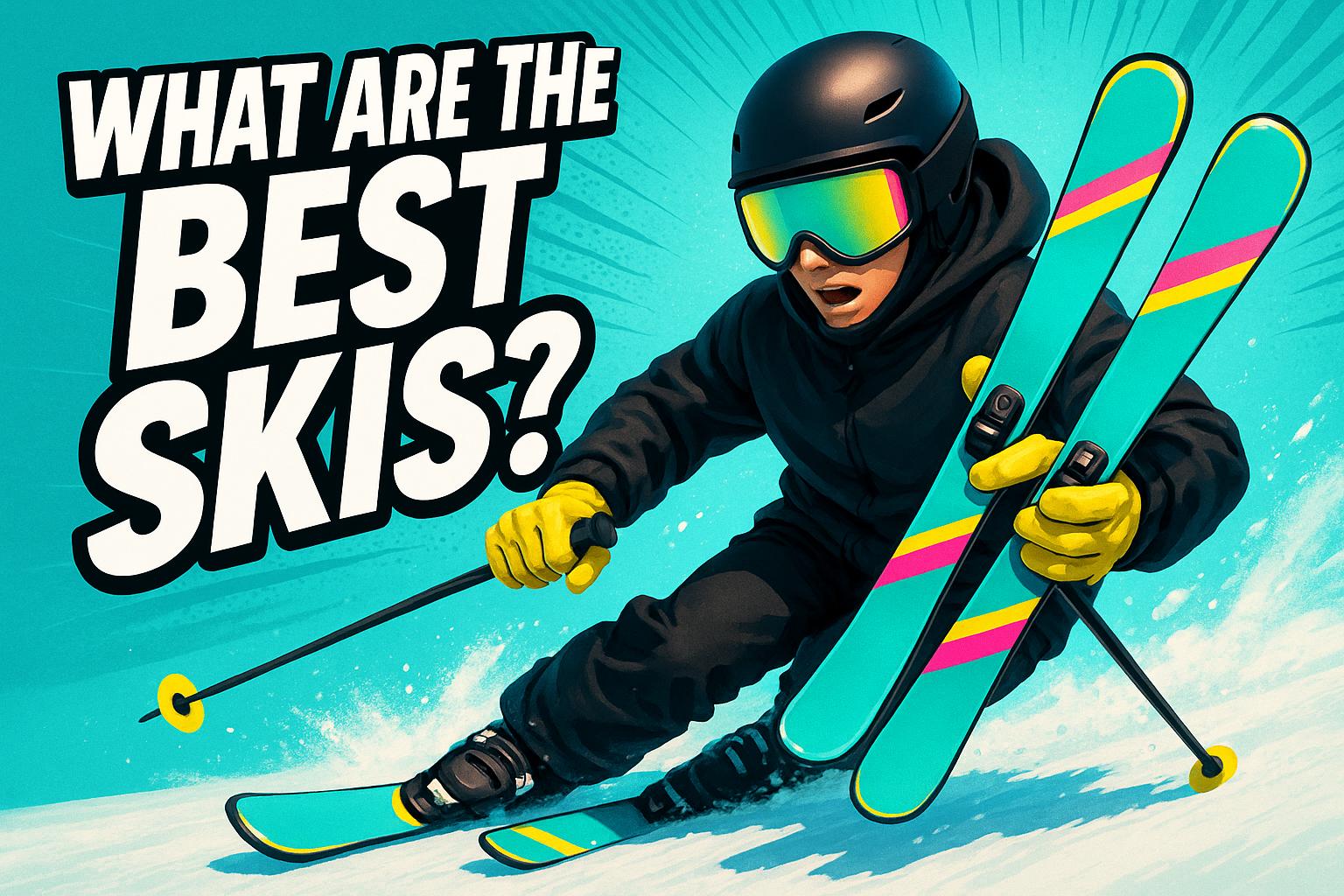








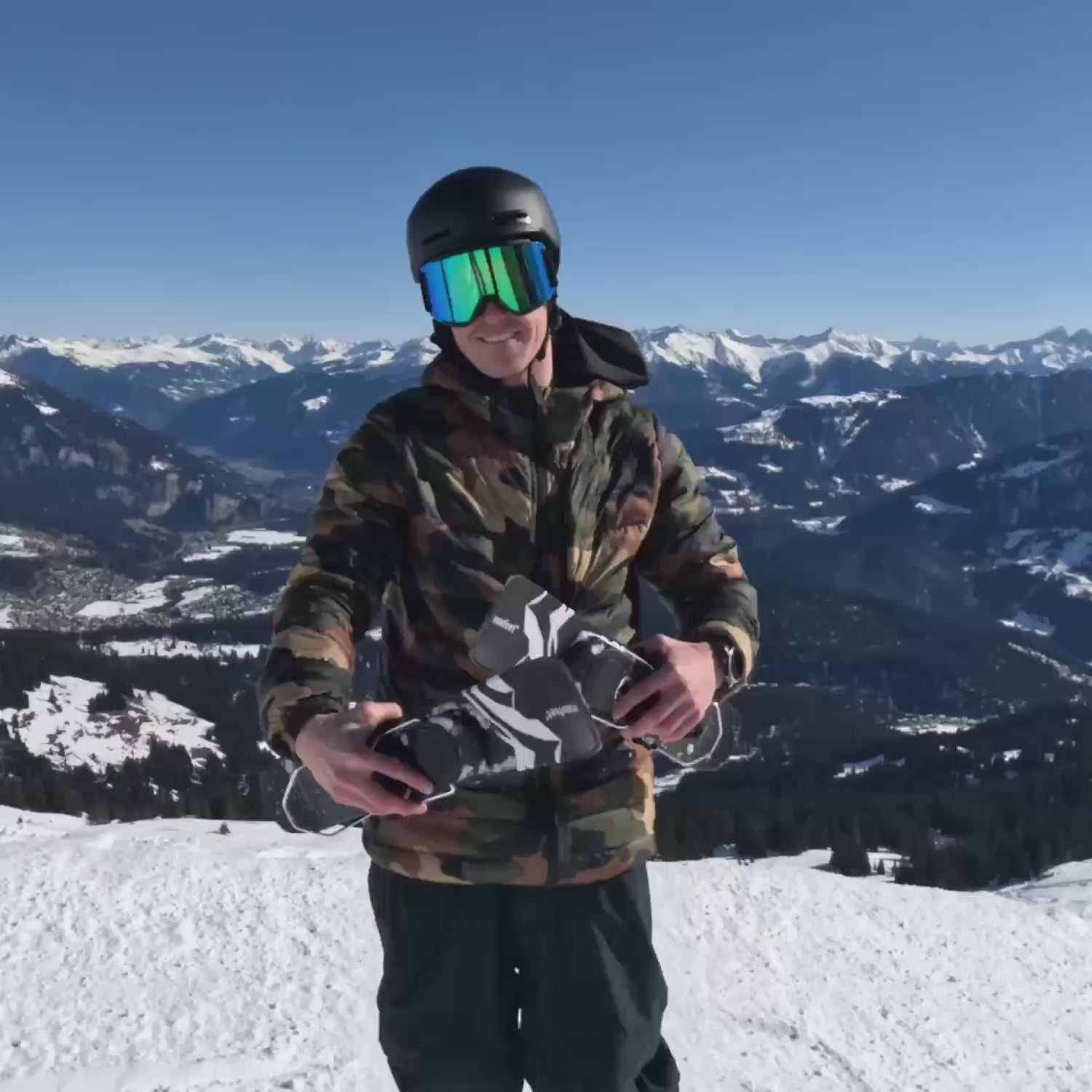

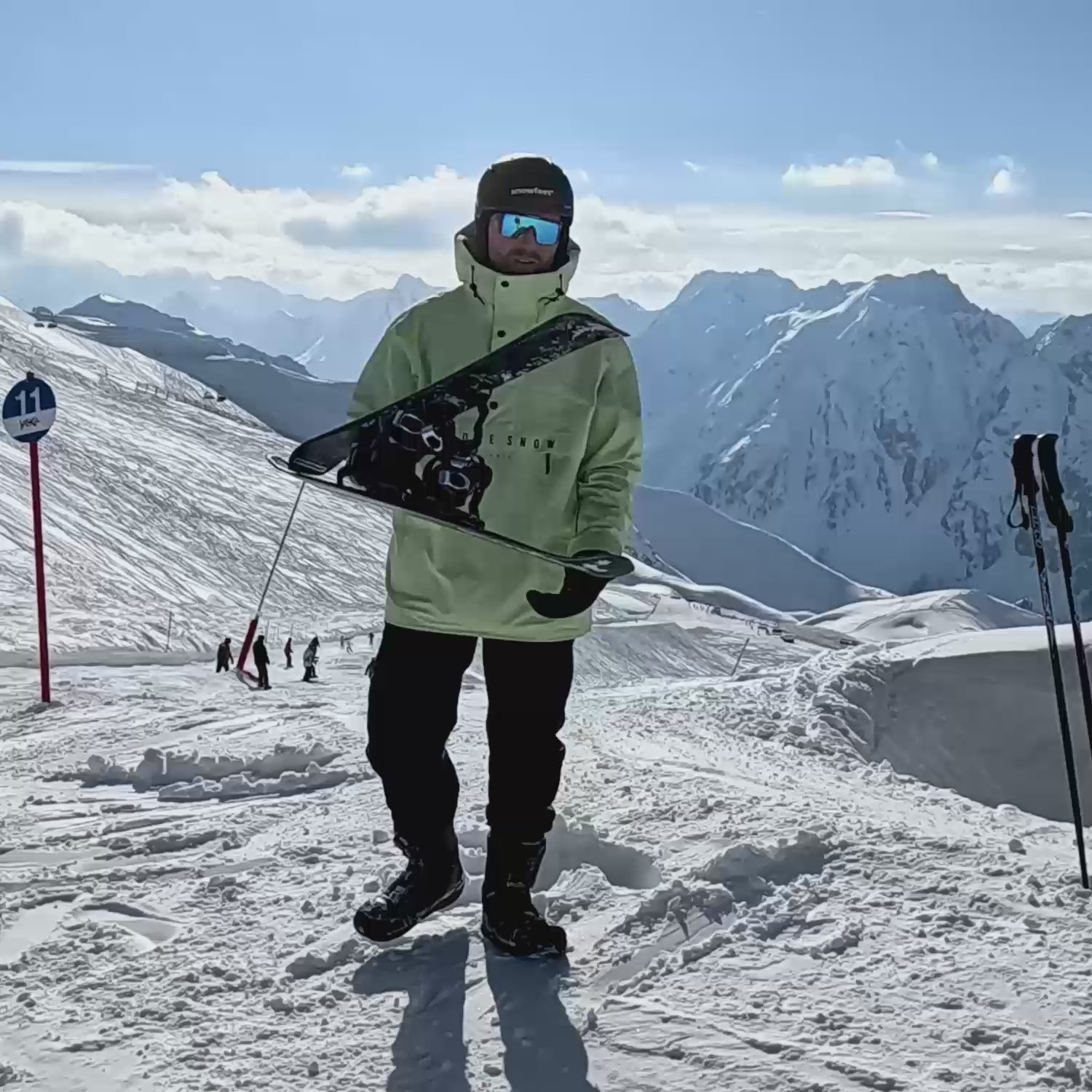
Laat een reactie achter
Deze site wordt beschermd door hCaptcha en het privacybeleid en de servicevoorwaarden van hCaptcha zijn van toepassing.